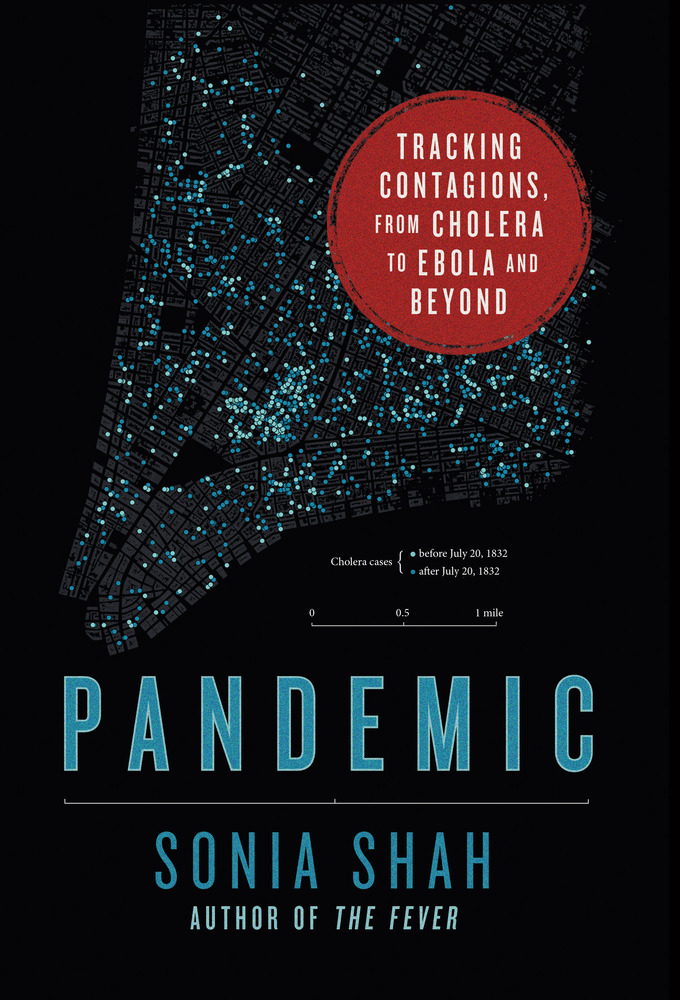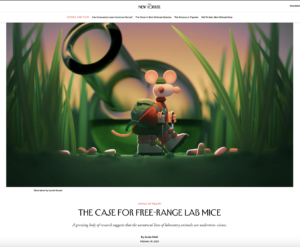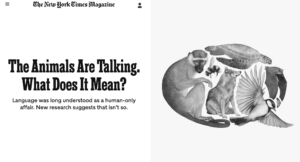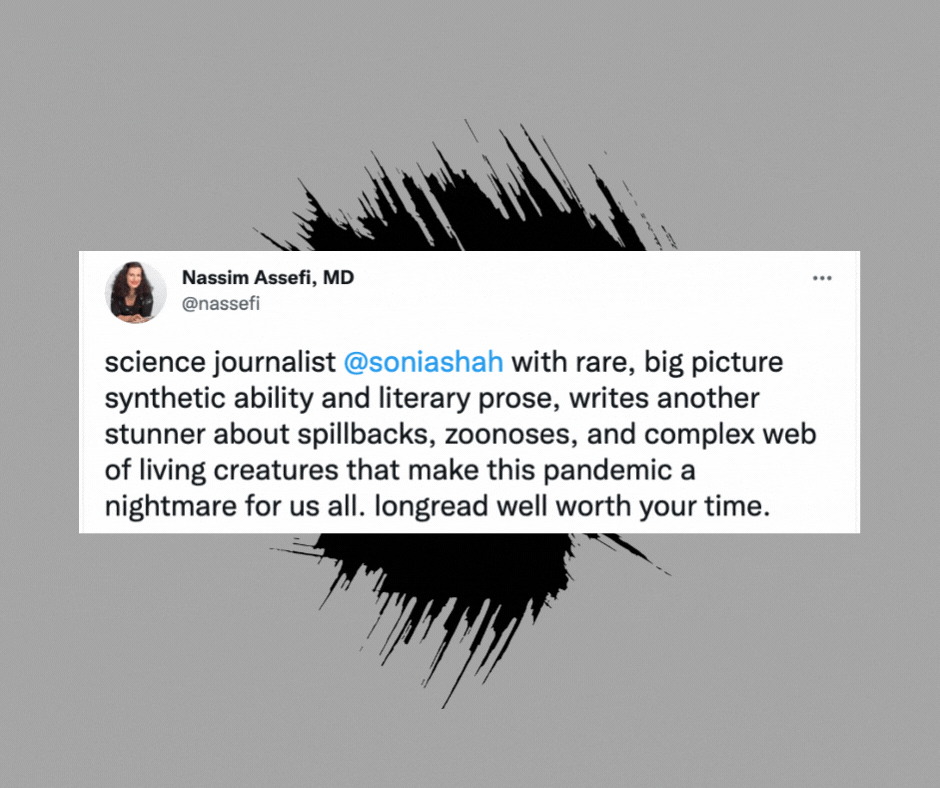
Pandemic by Sonia Shah
Selected as a New York Times Book Review Editor’s Choice and as a finalist for the 2017 Los Angeles Times Book Prize in Science/Technology, the New York Public Library’s Helen Bernstein Book Award for Excellence in Journalism, and the National Association of Science Writers’ Science in Society Award.
“The world’s ability to put the lid on pandemics has come a long way since the days when the plague, cholera and smallpox ravaged unchecked. Ms Shah’s book is a superbly written account of how we got here and what might await us.”
“Cholera — the acute bacterial infection that can kill in hours —serves as a lens on new pandemics in this grounded, bracingly intelligent study. As science journalist Sonia Shah reveals, more than 300 infectious diseases have emerged or re-emerged in the past half-century, and epidemiologists predict a catastrophic pandemic in the next. Shah lucidly layers history into a tour of transmission hotspots, from incubators of ‘spillover’ animal-borne illnesses such as China’s wild-animal markets to globalized transport and hyperdense cities.”
–Nature
“Sonia Shah, a science writer whose previous books include “The Fever” and “The Body Hunters,”does not seek shelter in euphemisms or shy away from scary numbers…chilling…Perhaps my favorite chapter, though, is about waste — or, as Ms. Shah puts it, “the rising tide of feculence.” Nothing seems to awaken the muse in Ms. Shah like excreta, the ideal delivery system for all kinds of diseases….To me, however, the most provocative — and sci-fi — part of Ms. Shah’s book is not about the ways humans have altered the evolution of pandemics. It’s about the ways pandemics have altered the evolution of humans. Pathogens, Ms. Shah explains, have always been the body’s antagonists. Every time we adapt to combat one, it counter-adapts to harm us back.”
“Could hardly be more timely…Ms. Shah steers us nimbly along the pandemic path…Ms Shah has chosen a complex structure for this book…but the strategy pays off; she has succeeded in producing a lively, rigorously researched and highly informative read.”
“This is the best single book I have yet read about the disease threats we all face in the 21st century.”
-global health blogger Crawford Kilian, The Tyee
“After witnessing first-hand the media hunger for quick and scary Ebola tales, I was pleasantly surprised upon reading Sonia Shah’s latest book, Pandemic. The distinguished science journalist takes us through the long, yet shrewdly articulated, journey that leads to human pandemics…As detailed in the biting and captivating chapter entitled ‘Corruption’, our current global health management system…has failed at preserving its independence by relying largely on private funding, and has not managed to overcome divergences between local and global interests. Such political intricacies were decisive, Shah rightly argues, in the rapid expansion of the West African Ebola epidemic in 2013–2014….This thought-provoking and well-documented book will contribute to spreading the word… I wish it a ‘pandemic success’.”
-Anne Cori, Nature Microbiology
“In this absorbing, complex, and ominous look at the dangers posed by pathogens in our daily lives, science journalist Shah (The Fever) cautions that there are no easy solutions. Of particular note is the challenge of tracking those pathogens that remain uncontained and which could overtake humans in a pandemic. As an example, Shah tracks the waterborne Vibrio cholerae bacterium from its home in the southwest Indian Ocean as it radiated from China and India to Paris in 1832, and then sailed to the U.S. with emigrants from cholera-plagued Europe heading to the eastern coast of North America—at the time there were 5,800 reported cases and nearly 3,000 deaths in New York City alone. Shah then meticulously dissects the conditions that made cholera’s transmission so effective and new outbreaks inevitable, including filthy water, overcrowding, political corruption and inaction, scapegoating, and even the expedited expansion of the human population by the harnessing of fossil fuels. “For most of our history, we’ve been unaware of pathogens’ role in our lives,” Shah writes, adding that most of the challenges still lay ahead. Shah’s warning is certainly troubling, and this important medical and social history is worthy of attention—and action.”
-Publishers Weekly
“Investigative science journalist Shah (The Fever, 2011) is at it again, and if the words, and beyond, in her latest book’s subtitle don’t grab a reader’s attention, they should. This time, she is calling on global leaders, public and corporate, to pay attention to an impending public health emergency. As she says, “between 1940 and 2004, more than three hundred infectious diseases [have] either newly emerged or reemerged in places and in populations that had never seen them before,” any one of which can unpredictably detonate a full-fledged global pandemic of potentially biblical proportions at any time. So much for humankind’s so-called postinfection era. Yes, just the reemergence of cholera—a disease previously believed thoroughly eradicated—in Haiti and elsewhere should be enough to alarm us to the grim possibility of evolving/mutating microbes capable of bringing worldwide human suffering and death. Shah doesn’t leave us wondering how this could happen in an age of proper sewage treatment and Purel. One-by-one she ticks off (no Lyme-disease pun intended) half a dozen conduits by which deadly microbes can spread faster than you can say Methicillin-resistant Staphylococcus aureus (MRSA)—an infection, by the way, that affected her family. Yes, Shah is back and in rare form. And this time it’s personal.”
“Vibrio cholerae was once a species of marine bacteria attached to some plankton in the coastal wetlands of the Bay of Bengal. In grim detail, science journalist Shah (The Fever: How Malaria Has Ruled Humankind for 500,000 Years, 2010, etc.) demonstrates how it became the global source of horrendous deaths and how the story of cholera is paradigmatic of how pandemics happen.
Cholera emerged in the early 1800s after the East India Company began to fill in and settle the wetlands. Disease might occur if a fisherman swallowed some brackish water, a direct transmission from the vibrio to a human. But to make the jump to human-to-human transmission, the vibrio changed. It adapted ways to form colonies, making it harder to dislodge from the human gut, and it developed a toxin that flushes all the fluids from the body, causing death by dehydration. Still, cholera might have stayed local except for other 19th-century developments: steamships and newly dug canals and waterways moved goods and people rapidly across land and sea, creating new waves of infection while also swelling the populations of cities, which lacked clean drinking water and proper waste disposal. By the 1830s, cholera was devastating Paris, London, and New York, exacerbated by the arrogance of medical elites who swore by the miasma theory of disease. Then, add political corruption after the cause was known: city contractors asked to supply clean water but substituting foul; government officials who would deny the existence of disease, so as not to discourage business. The ingredients for pandemics remain potent in a jet age with deforested lands, ever growing cities, the consumption of bush meat and other exotic wild cuisine (from illegal “wet markets”), antibiotic resistance, inadequate disease surveillance, and destructive cultural attitudes, ranging from abject fear to blame to indifference. Shah covers all of these aspects in vivid prose and through revealing eyewitness accounts.
This is not fun reading, but it’s necessary—one can only hope that it drives more effective surveillance and rapid response to tomorrow’s plagues.”












